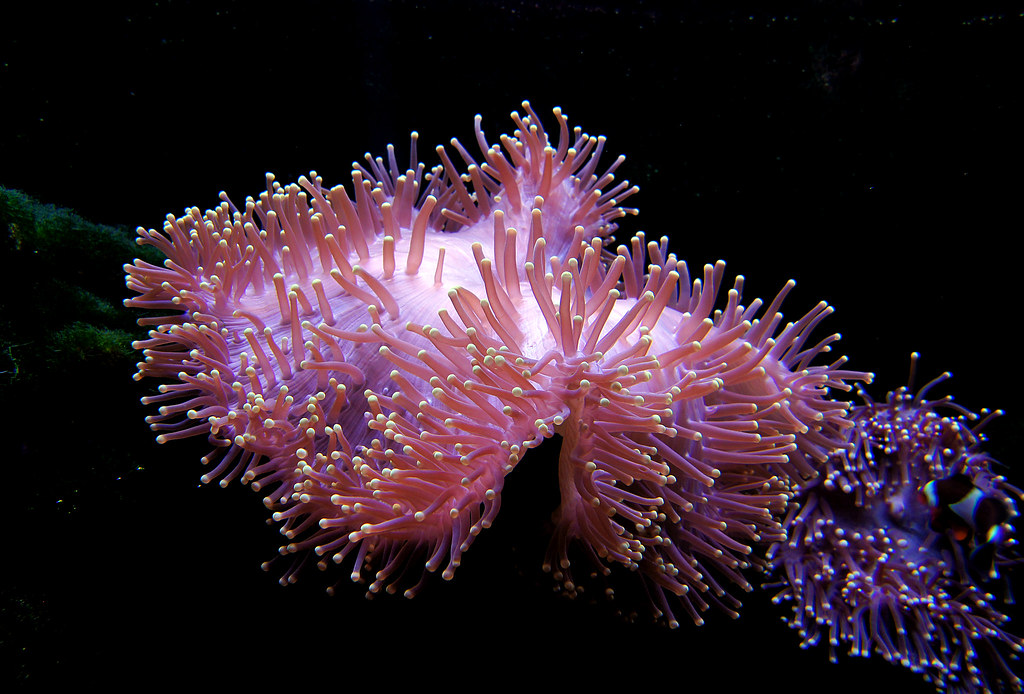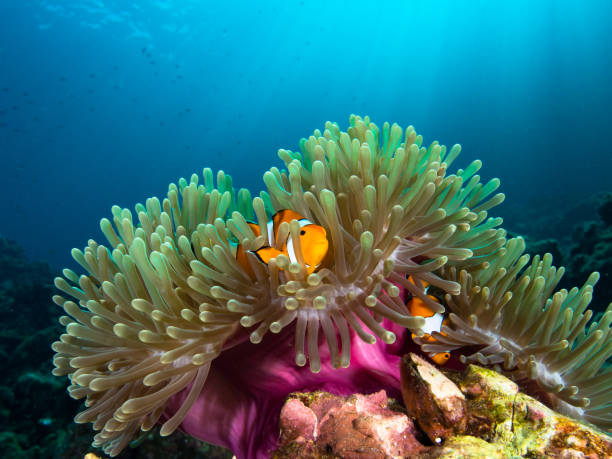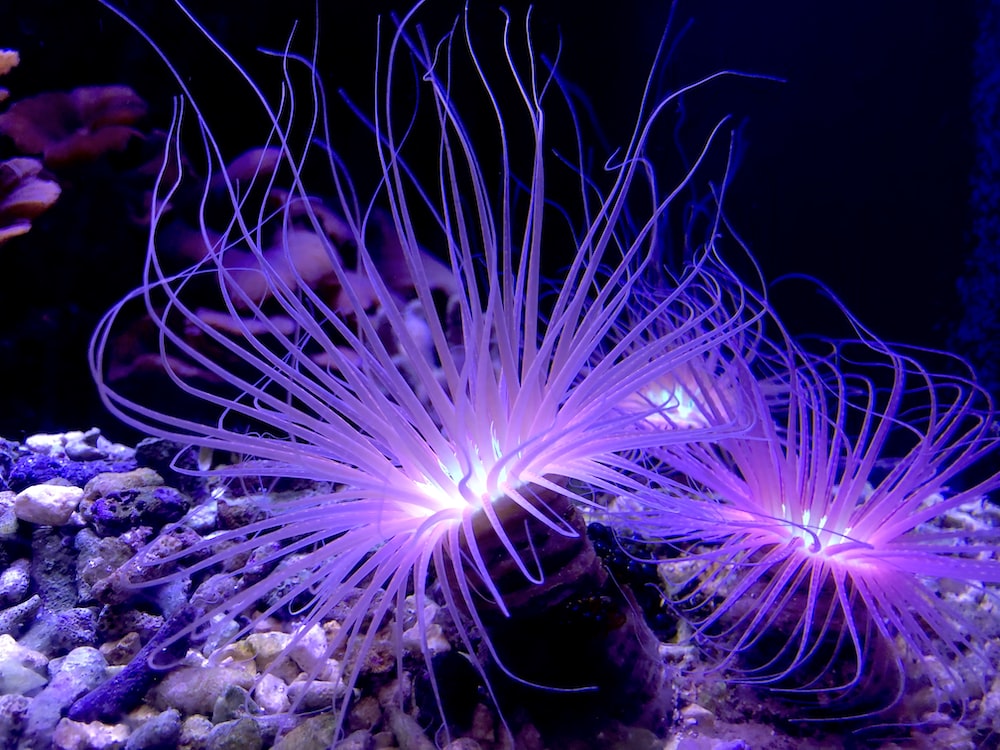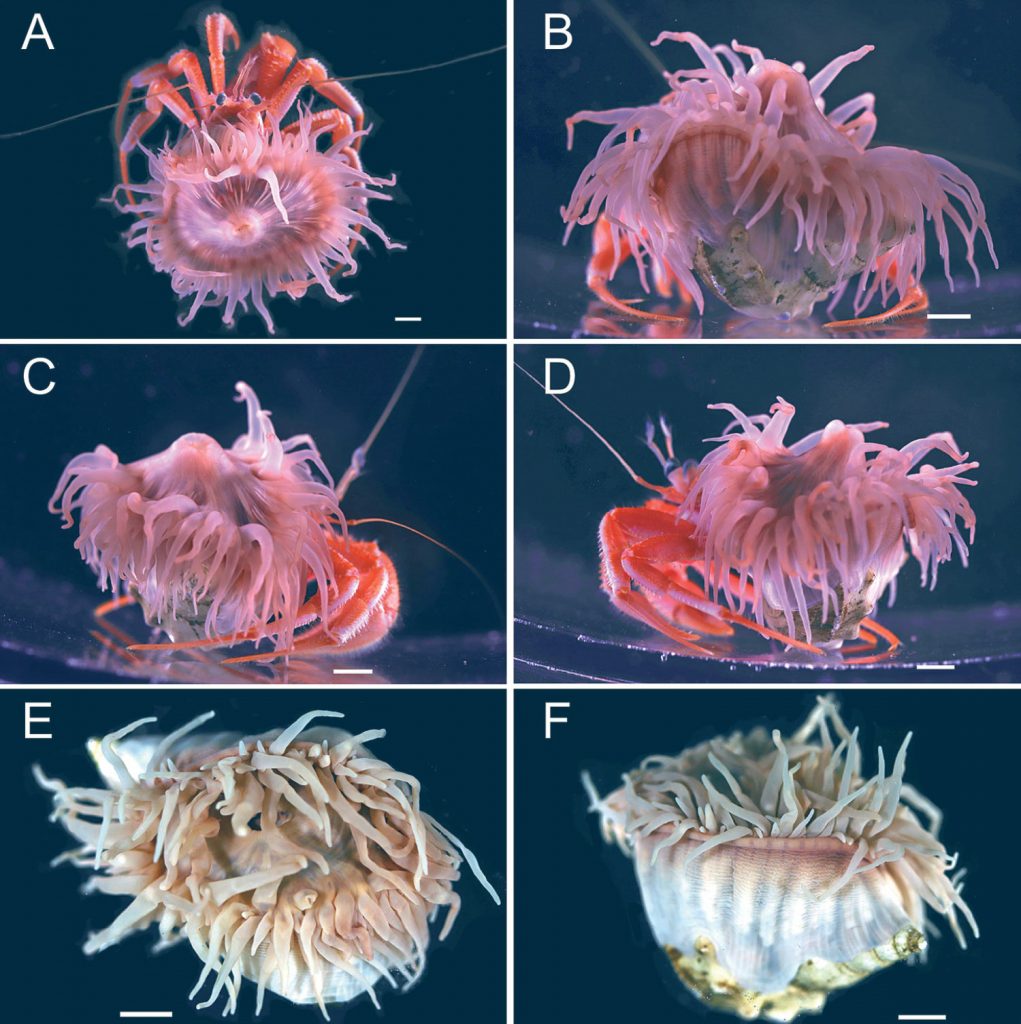
Sea anemone: Do you know Sea anemone
sea anemone, any member of the invertebrate order Actiniaria (class Anthozoa, phylum Cnidaria), soft-bodied, primarily sedentary marine animals resembling flowers. They are found from the tidal zone of all oceans to depths of more than 10,000 metres (about 33,000 feet). Some live in brackish water. They are largest, most numerous, and most colourful in warmer seas. The colourful Tealia are found in temperate regions.
The nearly 1,000 species vary in size from a few millimeters (a fraction of an inch) in diameter and length to about 1.5 metres (about 5 feet) in diameter. The largest sea anemones—also the largest cnidarians—are of the genus Stichodactyla.
Actinarians exhibit great variety in shape and habit. The cylindrical body may be thick and short or long and slender. The oral disk, containing the mouth, at the upper end of the body is surrounded by petal-like tentacles, which are often present in multiples of six. Sea anemones are commonly yellow, green, or blue; they are typically attached by the pedal disk, or base, to a hard surface such as a rock, wharf timber, a seashell, or the back of a crab.
Most seldom move; some occasionally creep very slowly or move in a slow somersaulting fashion. Members of certain genera (e.g., Edwardsia, Halcampa, Peachia) have no pedal disk but burrow deep into the sand or mud, exposing only the mouth and tentacles. Members of the genus Minyas float near the ocean surface, with the mouth hanging downward.

Does touching sea anemones hurt?
The barb has a type of venom they will help paralyze the prey and the sea anemone will slowly draw the prey item into its mouth. These stinging cells however do not work very well on animals with hard shells or very thick skin like… humans.
That is why touching the tentacles may feel sticky, but they will not hurt you. While the sea anemone doesn’t have a heart, its body moves in a pulsing, wave-like way, similar to a heartbeat. “The idea is these genes have been around a long time and preceded the twitchy muscles that cover our skeleton,” says Martindale

Do sea anemones live forever?
Some sea anemones are very long lived and have been known to reach 60-80 years. Because anemones are able to clone themselves, they do not age and therefore have the potential to live indefinitely in the absence of predators or disease.
Do sea anemones have brains?
The sea anemone, a cnidarian, has no brain. It does have a nervous system, and its body has a clear axis, with a mouth on one side and a basal disk on the other.
Can you pick anemones?
Anemone coronaria can be lifted and dried after flowering. Lift and dry anemone coronaria every two years, then replant. Soak the corms before planting.
How deep can sea anemones live?
More than 1,000 sea anemone species are found throughout the world’s oceans and survive at depths of more than 32,000 feet below sea level. The largest and most diverse varieties live in shallow tropical waters. Though some are free swimming, most adult anemones stay in one place.
How do anemones have babies?
Aggregating anemones can reproduce by spawning or asexual division (also known as binary fission). Asexual division often occurs in the fall and winter seasons, followed by spawning in the spring and summer seasons. Asexual division creates colonies of genetically identical anemones.


ပင်လယ်ကိုချစ်တယ်
Thanks we
Good morning all guys ❤️🌄
Thank a lot of your sharing general knowledge.Cute and beautiful 😍💜🦑🐙🐡
Thank you for sharing about these cute little invertebrates.🐙🦑
Thanks lots for sharing knowledge.
Thanks indeed for precious knowledge.
Amazing! Very interesting facts, thanks!
Quality artticles is the important too intertest the uers to pay a
quick visit the web page, that’s what tis web site is providing.
WOW! They can go and survive at depths of more than 32,000 feet below sea level.
Dine
Done
Ok
Thanks
Good
Beautiful 😊
So nice article. I’ve got the general knowledge about sea anemones and thanks for that!
Good ,🍒👌
Amazing!
Ok 🍒👌😊
😍😍😍
🍒😊😊😊
Done Done 😊
Beautiful species 😊
Very beautiful.
Wow!
So cute 🥰🥰
Wow!! They’re so cute and beautiful. I love it. Thanks for sharing with us.
Thank you for sharing knowledge.Some photos of anemone animals are so beautiful.